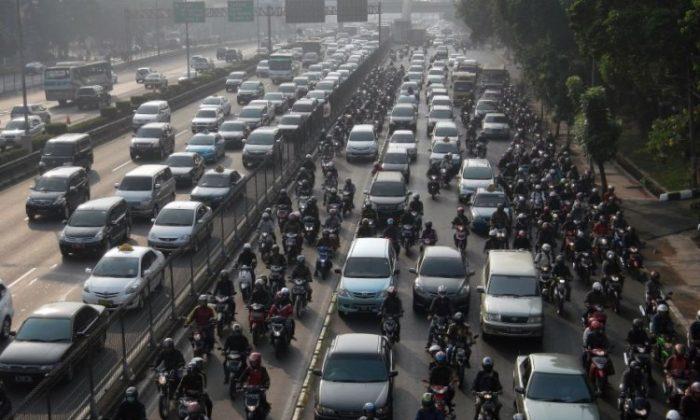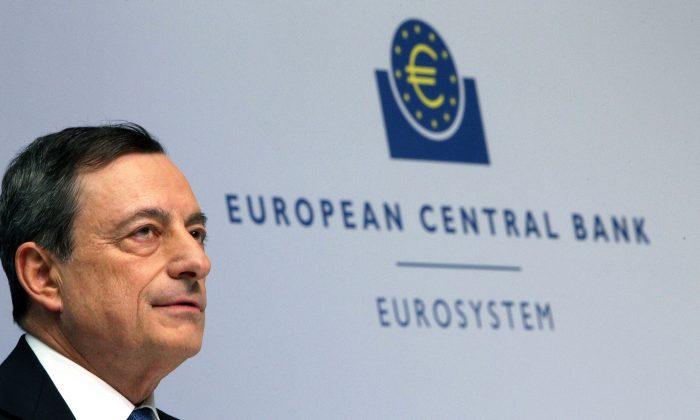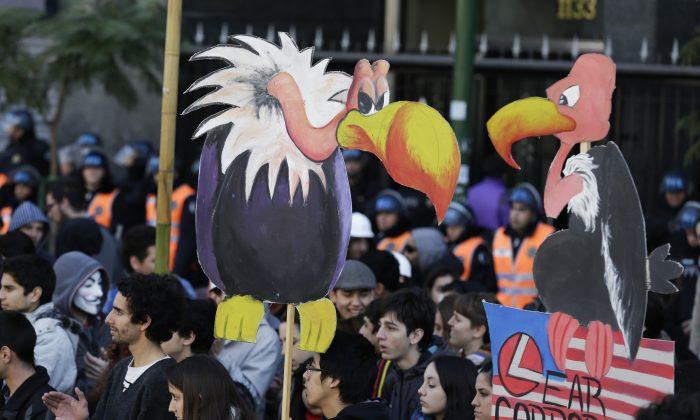One reason behind greater pollution leading to global warming has been artificially lowered gas prices brought by subsidies. Governments have carried on this shortsighted policy to foster growth and satisfy consumers. But as world fuel prices begin rising again, the costs of subsidy—both budgetary and environmental—will come to the fore.
While the much-talked-about carbon tax remains unpopular with consumers, curbing producer subsidies that encourage fossil fuel consumption could be a more effective way to fight environmental challenges.
In 2009, G-20 leaders acknowledged world subsidy problems and sought to “phase out and rationalize over … inefficient fossil fuel subsidies. Yet one only needs to visit bustling Shanghai or Jakarta today to see that Asian economies have taken the opposite approach during the past four years and are more reliant on fossil fuels than ever before to support economic growth.
Nominally, fuel subsidies can and do exacerbate huge traffic jams from Tianjin to Mumbai. This has two major outcomes: wasted time and money. Recently a study by economists at Texas A&M University found that Americans waste more than $181 billion a year in lost productivity and fuel consumption just sitting in traffic.
Imagine the aggregate costs to the world economy when Asia is factored in—$1 trillion would perhaps be a conservative estimate. Nonetheless, reversing policy on promised consumer subsidies is a challenge. Last year, attempted political reform of consumer subsidies, in other words, raising prices to reflect market economics, in Nigeria and Indonesia led to riots.
Consumer Subsidies
The consumer fuel subsidy has become a right of entitlement fixed in many minds, especially in countries rich with natural resources, while demands from foreign institutions and economic experts in London or Vienna ring hollow with the average person slugging it out on the streets of Colombo, Hyderabad, or Chicago. Economic theory is disconnected from reality.
However, consumer subsidies, while visible, are the tip of the iceberg. Most of Asia’s fast-paced growth is being driven by hidden upstream producer fuel subsidies that abet the Asian export model.
These subsidies strain state budgets and create a false economy. If fuel prices were aggregated for true costs—or the baseline called “zero-price gap subsidy” by OECD (Organization for Economic Cooperation and Development) for transportation, storage, production, taxes, and health/environmental liabilities—Asian economic activity would be considerably dampened, as it is currently in the EU and U.S. post–economic crisis.
Producer subsidies, especially in China, can be found at the state, provincial, local, and corporate levels under the guise of state-owned enterprises, or SOEs. Precise data is hard to extract.
Consider a few examples of what producer subsidies have done to distort usage in Asia: In China, to attract investors, unregulated coal-fired power plants spring up in provinces, spewing pollution that violates Beijing’s national policies.
In Malaysia, production-sharing contracts ensure that oil investors are backstopped. New tollways (a toll road) in Thailand and megalith airports in Indonesia are indirectly subsidized via preferential land-acquisition policies, below-market rate capital and tacitly approved destruction of rainforests and grasslands. Even in the United States, rights of way are given to pipelines under eminent domain clauses. Such incentive subsidies are not widely available to other investors or businesses.
Producer Subsidies
Producer subsidies at the national level consist of preferential tax rates; land rights, including public domain; and credit subsidies for fossil-fuel exploration, production, and shipping. An example would be in the production-sharing contract used in developing countries for oil production—or government guarantees to oil investors to insure their capital outlays via full cost recovery. In other words, guaranteed profits.
Provincial or subnational subsidies are especially endemic in China, where provinces compete against one another for investment. For example, Hebei and Guangdong provinces have created their own “strategic petroleum reserves” outside the national government. Regional gas-pricing differences and fuel quotas can foster smuggling activity.
Municipal subsidies include public transportation such as buses in Delhi and ferries in Bangkok, both burning polluting, underpriced diesel fuel, to create subsidized ticket prices. Municipal electric utilities also have access to low-cost capital through guarantees by local government credit ratings.
Even at the corporate level, collusion between government officials and companies can create a perverse subsidy. In Indonesia regulations for coal mining, transportation, and workers’ safety and environmental laws are routinely ignored. State-owned utility companies in Asia, supported at the federal, regional, and local levels are energy- intensive and garner a significant source of recurring subsidy activity via rights-of-way for pipelines or transmission corridors, which reduce operating costs.
In these local cases, producer-subsidized fuel prices are an unquantifiable black hole below consumer subsidies that create false economic activity. Such wasteful activity and subsidization cannot last.
Two immediate challenges flow from fuel subsidies. The first, climate change, is well publicized, held either in respect or contempt by politicians worldwide. The problem with fossil-fuel addiction and global warming is that it’s a “public goods” problem—no one government wants to take ownership. As long as individual countries seek to promote their economic agendas first, the consequences of climate change will be a problem for other governments.
Humanity will pay the price from this denial.
The second issue is that most economies in Asia are export economies, which means they pay low manufacturing wages to keep shipping products abroad to the wealthier EU and United States.
As long as they have more exports than imports, surplus budgets can easily offset the real-market input costs of fuel subsidies. In other words, underpriced labor is underpinning low cost fuel. Yet cracks are already starting to show, as countries like Indonesia and Sri Lanka report larger trade deficits due to slowing exports and rising import costs.
Governments’ response to slowing exports has been the standard playbook: devalue their currency. Nonetheless, fuel prices have a real market cost, and a devalued currency buys less fuel on the open market, putting pressure on the consumer subsidy and creating budget overhangs. This tends to exacerbate producer subsidies to make up for slowing growth. If left unchecked, both trends pose ugly consequences for all.
While global warming may be a long-term threat, economic shortfalls are more pressing. The fossil-fuel subsidy model—consumer and producer—that emerging Asia is so highly dependent on for economic growth led by exports for political stability is not tenable long term.
Attacking only the consumer subsidy, with its visible contributions to pollution and bottleneck traffic jams, does nothing to alleviate entrenched and opaque producer subsidies. It will only be possible to address concerns about growth and efficiency when leaders make the hard decisions to reduce both.
This requires a mindset change about how energy is viewed, as the subsidies precipitate a deeper addiction to fossil fuels. A total systems rethink is more critical than ever before, for the world’s health and economic viability.
Will Hickey is an associate professor and chair of Global Management at SolBridge University. With permission from YaleGlobal Online. Copyright © 2013, Yale Center for the Study of Globalization, Yale University.





Friends Read Free